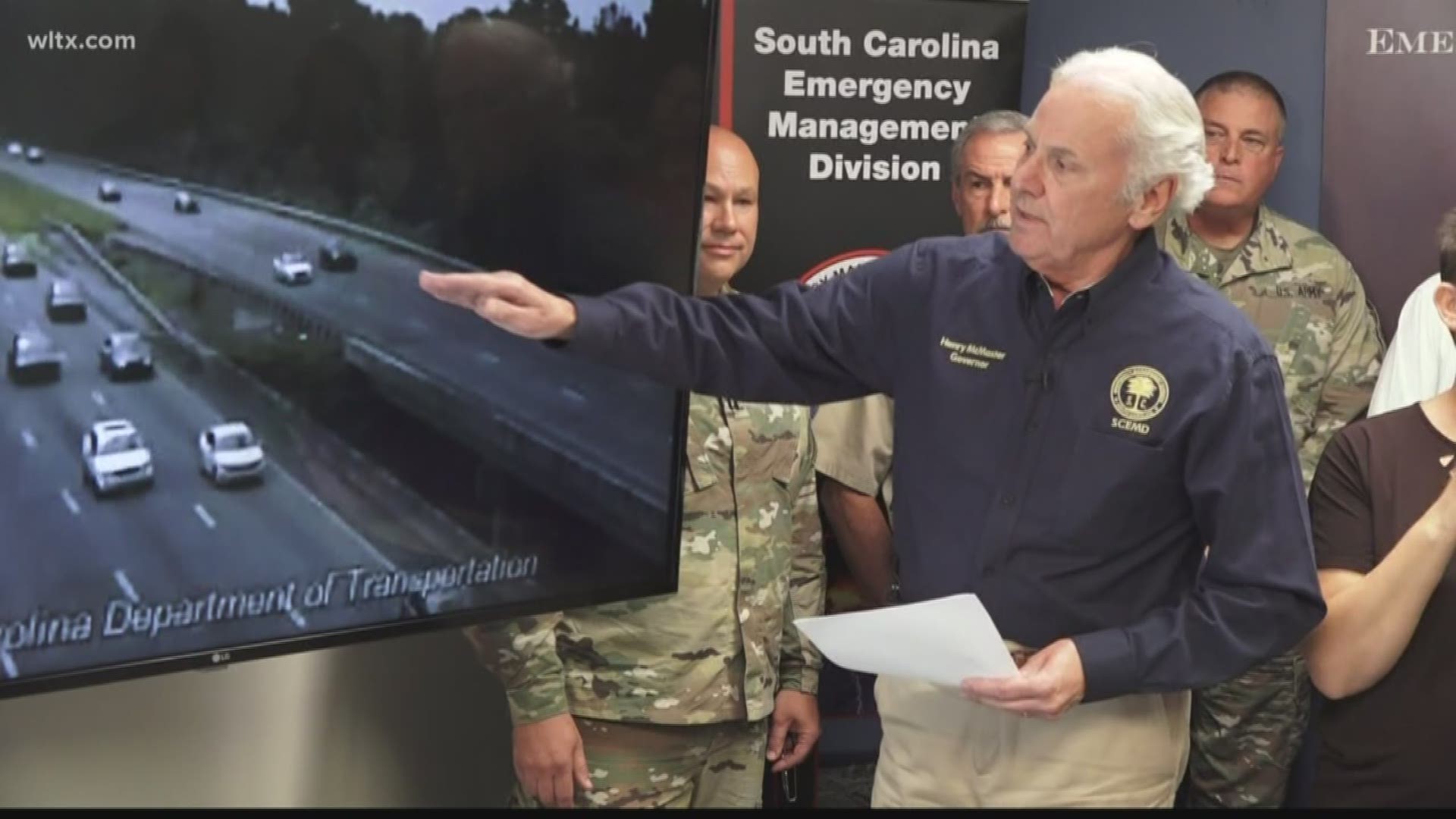COLUMBIA, S.C. — South Carolina officials now say lane reversals along Interstate 26 in South Carolina will end Wednesday, nearly two days after they began to move evacuees away from the coast ahead of Hurricane Dorian.
South Carolina emergency officials say the reversals will stop at 2 p.m. to allow crews to seek shelter at safe locations outside of the storm's projected path. After that, normal traffic flow will return.
STAY UP TO DATE: Download the WLTX app: Android | iPhone and sign up for the WLTX Daily Dive Newsletter.
The lanes have been reversed since 10:30 Monday between I-526 in Charleston and I-77 in Columbia. Both the SCDOT and the Department of Public Safety said the effort was relatively smooth.
McMaster ordered the evacuations Sunday night for all communities that lie directly along the South Carolina coast. The move affects roughly 830,000 people, the governor said.
McMaster on Tuesday told everyone they needed to leave now, and suggested that the last good time to leave would be Wednesday morning.
Schools in those areas have also been cancelled until further notice. Systems in the Midlands
The latest forecast model from the National Hurricane Center has Dorian coming near the South Carolina coast, but never actually moving ashore in the state. If that track holds, the coast would get high winds, dangerous storm surge, and flooding rains.
RELATED: Evacuaciones obligatorias para toda la costa de South Carolina, reversiones de carriles en la I-26
Places further inland will see less and less effects, the further away they are from the coast.
To find out whether they are in evacuation zones, South Carolinians can use the “Know Your Zone” tool on SCEMD’s website. Residents can know their zone instantly using the SC Emergency Manager mobile app, simply by sharing their location.
Evacuation shelter locations will be available on scemd.org and in the SC Emergency Manager mobile app as soon as they are opened.
Evacuees should pack the following essential items in case the evacuation period is lengthy: required medications, adequate clothing and essential personal items. Residents going to evacuation shelters should bring their own blankets, pillows, cots and special food items if they are on restricted diets.
Individuals and families should plan to board pets with veterinarians, kennels, or other facilities in non-vulnerable areas. While pets are not allowed inside Red Cross evacuation shelters, people with animals can take their pets with them to any shelter so volunteers can help them make arrangements.
STAY UP TO DATE: Download the WLTX app: Android | iPhone and sign up for the WLTX Daily Dive Newsletter.


